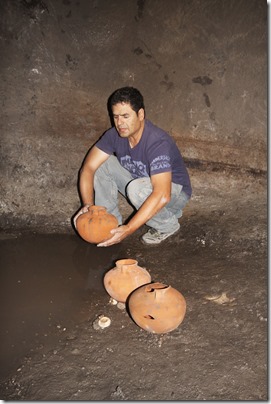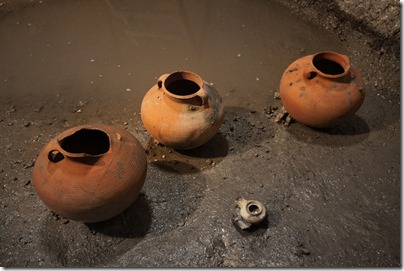Evidence of the Roman siege of Jerusalem in AD 70 has been found in excavations near the Western Wall of the Temple Mount of Jerusalem. From the Jerusalem Post:
The Antiquities Authority on Thursday unearthed for the first time a small 2,000-year-old cistern near the Western Wall that connects an archeological find with the famine that occurred during the Roman siege of Jerusalem during that era.
The cistern – found near Robinson’s Arch in a drainage channel from the Shiloah Pool in the City of David – contained three intact cooking pots and a small ceramic oil lamp.
According to Eli Shukron, the excavations director for the Antiquities Authority, the discovery is unprecedented.
“The complete cooking pots and ceramic oil lamp indicate that the people went down into the cistern where they secretly ate the food that was contained in the pots, without anyone seeing them,” he said. “This is consistent with the account provided by Josephus.”
The Jerusalem Post story continues with Josephus’ description of the last desperate days of the Roman siege.
The story is also reported by Arutz-7, and the Israel Antiquities Authority press release includes high-res photos (direct link). A 3-minute video shows the discovery with audio in Hebrew.
HT: Joseph Lauer


